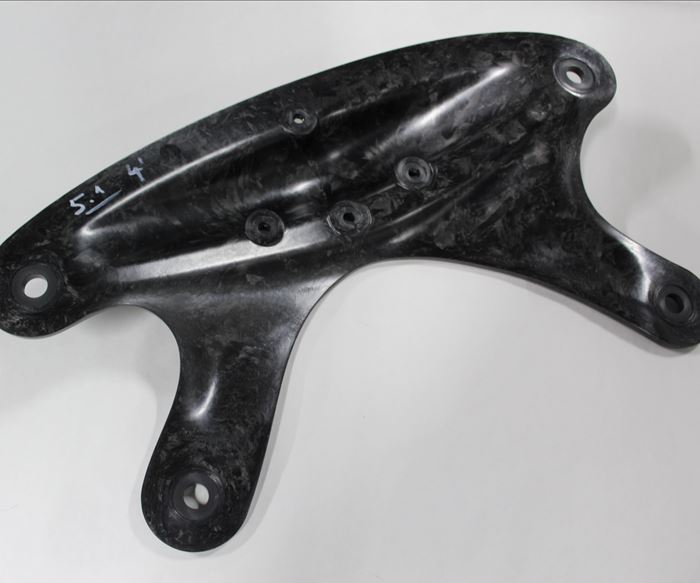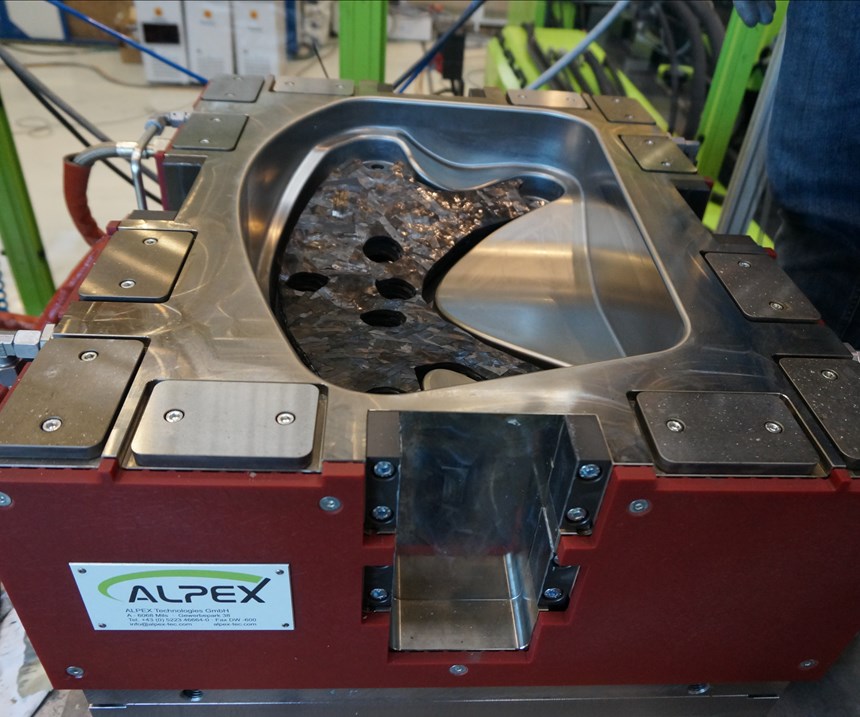Hexcel molding compound enables high-volume, zero-waste process
The company’s HexMC-i 2000 high-performance molding compound has been used to produce a carbon fiber-reinforced plastic (CFRP) transmission crossmember using a zero-waste process well-suited for high-volume manufacture.
Hexcel (Stamford, Conn., U.S.) announced March 25 that its HexMC-i 2000 high-performance molding compound has been used to produce a carbon fiber-reinforced plastic (CFRP) transmission crossmember using a zero-waste process well-suited for high-volume manufacture. The transmission crossmember has been developed by Hexcel and the Institute of Polymer Product Engineering (IPPE) at the University of Linz (Linz, Austria), Engel (Schwertberg, Austria) and Alpex (Mils bei Hall, Austria). The automotive part is comparable with aluminum versions in terms of its performance and price, but could be 30–35% lighter.
“These parts connect either side of a vehicle’s chassis together and support its transmission, and must be stiff, strong, and resistant to fatigue,” says Hexcel director of Sales and Marketing for Automotive, Achim Fischereder. “As they are exposed to the road, they must also be resistant to stone chipping and corrosion caused by water and salts."
To meet these requirements, the partners selected HexMC-i 2000, which Hexcel says is specifically designed to bridge the price–performance gap between sheet-molding compounds (SMCs) and prepregs. The material is reportedly stiffer than steel at approximately a fifth of the density is said to have a consistent mechanical performance.
HexMC-i 2000 comprises randomly orientated rectangular chips of unidirectional carbon fiber-reinforced prepreg impregnated with Hexcel’s M77 snap-curing epoxy resin to form a 2000gsm sheet material. The molding compound can reportedly cure in as little as two minutes to produce lightweight, strong and stiff parts.
To produce the transmission crossmember, preforms of HexMC-i 2000 are laid up in molds fabricated by Alpex and compression-molded using a v-duo press that has been tailored for the application from Engel. Ribs, aluminum inserts and other functions can be molded into the part using the single-stage process, reducing component-count in comparison with metal versions of the part and keeping costs low.
Offcuts from the preforms can be interleaved between the plies of material to provide additional reinforcement in key areas—meaning that the process generates no waste whatsoever. Another option being explored by the partners is to transform these offcuts into carbon fiber mat prepreg using techniques developed by Carbon Conversions Inc. (CCI, Lake City, S.C., U.S.).
According to Hexcel, advanced finite element method (FEM) simulation techniques developed by IPPE contributed to the design of the part, which Hexcel says is highly optimized and demonstrates the strength and fatigue-resistance demanded by the application.
Fischereder says, “Hexcel is looking forward to working with our partners to further harness the benefits of high-performance HexMC-i 2000. Using the predictable, zero-waste process we have developed, we have shown that we can match the performance and price of metallic structural components while reducing weight significantly.”
Related Content
-
Plant tour: Joby Aviation, Marina, Calif., U.S.
As the advanced air mobility market begins to take shape, market leader Joby Aviation works to industrialize composites manufacturing for its first-generation, composites-intensive, all-electric air taxi.
-
Materials & Processes: Composites fibers and resins
Compared to legacy materials like steel, aluminum, iron and titanium, composites are still coming of age, and only just now are being better understood by design and manufacturing engineers. However, composites’ physical properties — combined with unbeatable light weight — make them undeniably attractive.
-
PEEK vs. PEKK vs. PAEK and continuous compression molding
Suppliers of thermoplastics and carbon fiber chime in regarding PEEK vs. PEKK, and now PAEK, as well as in-situ consolidation — the supply chain for thermoplastic tape composites continues to evolve.

.png;width=70;height=70;mode=crop)
















